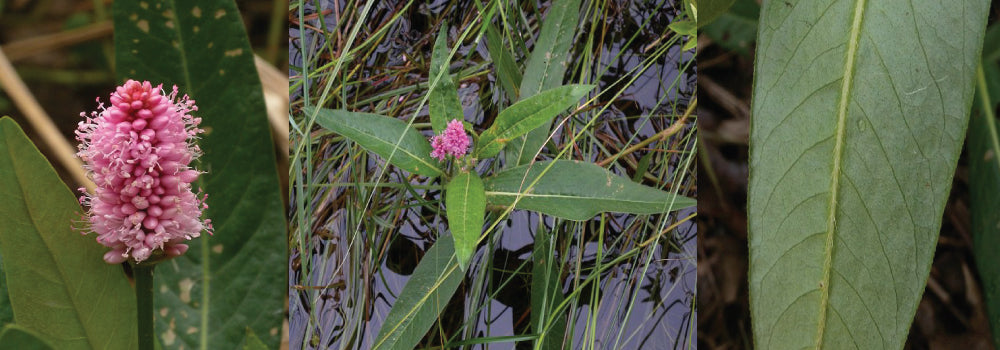Water Smartweed

Water smartweed plants grow in wetlands, muddy soils, borders of small lakes and ponds, shallow water and deep ditches in much of North America. It has thick spikes of bright pink flowers borne on a thick stalk above the alternate, oval, leathery green leaves. The flowers bloom from June to October afterward each flower fertile flower is replaced by a single seed. When growing on land, the stems are erectly reaching 3 feet tall. The leaves are 2 ½ - 8 inches and ½ - 2 inches across with sharp-pointed tips. Plants growing underwater have hairless stems up to 6 feet long, and submerged rounded-tipped leaves. The root system is formed with rhizomes from which new plants can develop.
Prevention
This perennial plant is often considered a nuisance; however, water smartweed is an important food source for aquatic waterfowl, songbirds, quail, doves, and small mammals. They also hold soil and purify the water. To prevent overabundant growth treat invaded area early in the season before dense stands of weed occur.
Physical/Mechanical Control
Cultivation or hand control can help restrain the proliferation of these weeds. Mowing before flowering can reduce seed set. All plant remnants must be removed from the area and properly discarded to prevent re-growth.
Chemical Control
When used carefully according to the label instruction, aquatic herbicides can be safe and effective management tools.
Clearcast Herbicide and MSO Adjuvant are specifically designed for use in and around water. These products are the ultimate solution in eliminating most emergent vegetation for long-lasting results with minimal retreatment.
